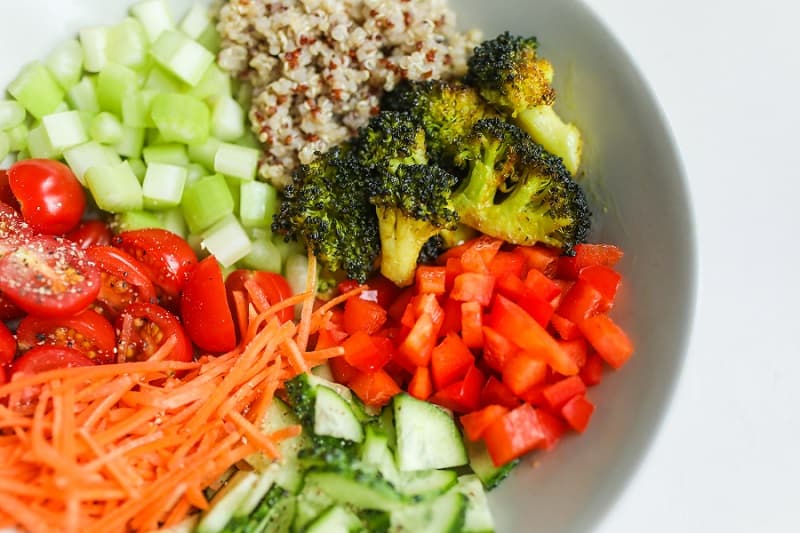Plant-based diets have consistently been shown to be effective for long-term weight loss. For those who are trying to achieve their weight loss goals more rapidly, there are certain foods and strategies that can boost your efforts.
Plant-based, vegan foods from the legume, whole grain, fruit, and vegetable categories are most beneficial for maintaining a lean, healthy body. More specifically, beans, oats, apples, celery, broccoli, and vinegar have been shown to assist with long-term weight loss.
Weight loss can be a completely passive, effortless achievement with a plant-based diet and a few added tips laid out below.
Best foods for weight loss
Before diving in to the specific weight loss foods, I would like to point out a few things that pertain to all of the foods listed below.
- These foods are all naturally low in calories, which means you don’t have to limit yourself with portion sizes.
- These foods are naturally low in saturated fat which has been proven to increase body fat.
- These foods are completely devoid of cholesterol, which means there are zero animal products listed below because none of them are low in calories, saturated fat, nor cholesterol.
Beans
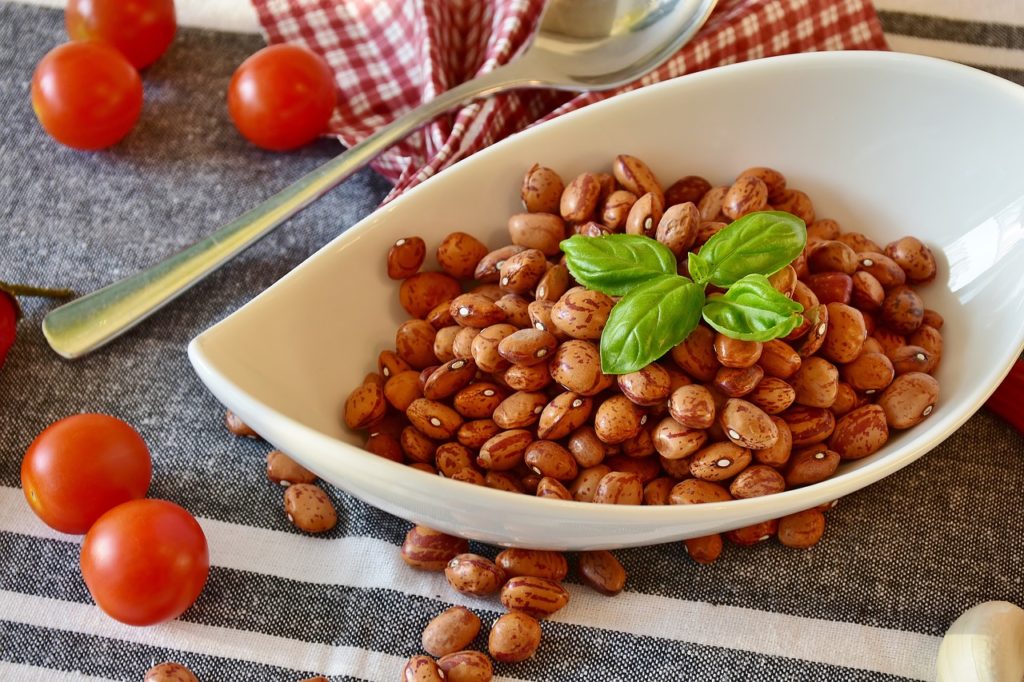
Beans and other legumes are packed with fiber, protein, and iron. Fiber will fill up your stomach helping you feel more satiated on smaller amounts of food.
The high protein content in beans will help reduce your appetite for several hours or even into the next day!
Beans have what is called a second meal effect. Basically, you end up consuming less food in the subsequent meals following one containing beans simply because they are so satiating.
The short video displayed below explains the benefits of the “second meal effect” in greater detail.
Legumes have also been shown to contain resistant starch. This is the starch that is resistive to digestion, similar to soluble fiber.
Resistant starch has been shown to improve insulin sensitivity, lower blood sugar levels, and reduce appetite. All functions that assist with healthy weight loss.
All beans have a very mild flavor and are therefore super versatile. You can add them to burritos, soups, salads, stir-fries, or blend them up as hummus.
My favorite bean dish is to mix chickpeas with spinach squash curry over jasmine rice. Or I will eat them daily in my Buddha bowl, which is basically a salad with grains and beans.
Be sure to soak your beans for at least eight hours before cooking them. Soaking and cooking your beans ensures you have destroyed all the harmful lectins that can potentially make you very ill.
The easiest way to prepare them, I have found, is to cook them in a pressure cooker. This brings a little more convenience to your meal prep.
Experts recommend getting at least 3 servings of beans per day. This measures out to be about a cup and a half per day.
Oats
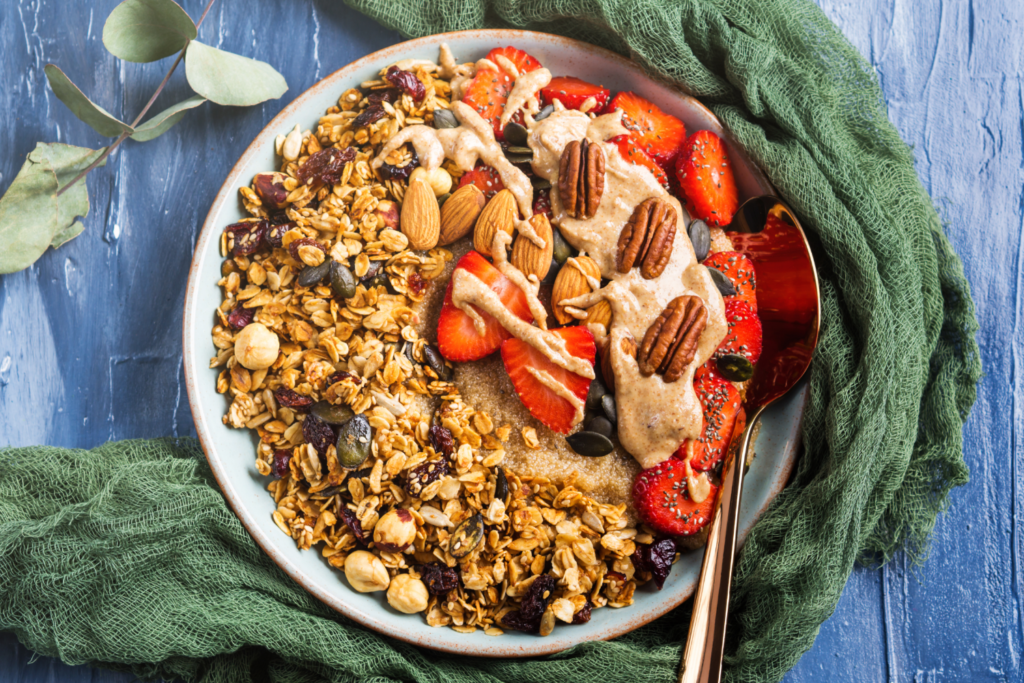
Like beans, oats are full of fiber. Not only does fiber contain zero calories, but it helps keep your body from absorbing all the sugar, starch and fat you consume.
So if you are eating a meal with a large amount of sugar, starch, or fat be sure to include foods that have plenty of fiber to reduce the calories absorbed.
Remember, fiber is indigestible, which means you can load up your plate with high fiber foods without becoming too concerned about calorie intake.
Oats are also relatively high in protein, which we already know helps to decrease our hunger and leave us feeling fuller for longer bouts of time in between meals.
Another weight loss advantage of oats is a unique mechanism where the grain acts like a sponge moving through your system gathering up nearby toxins and waste products to be excreted from the body.
If these toxic substances are not removed, they can build up over time causing endocrine disruption which, in turn, has a tendency to lead to more weight gain.
This grain is also low in calories with about 1.5 grams of fat per cup. Some people choose to eat their oats with some less than ideal additives, however.
If you are consuming oats in the form of oatmeal, be sure you are purchasing a minimally processed whole-oat version. Also be careful to only add low-calorie toppings to your morning oatmeal such as fresh berries or apples with cinnamon.
Celery
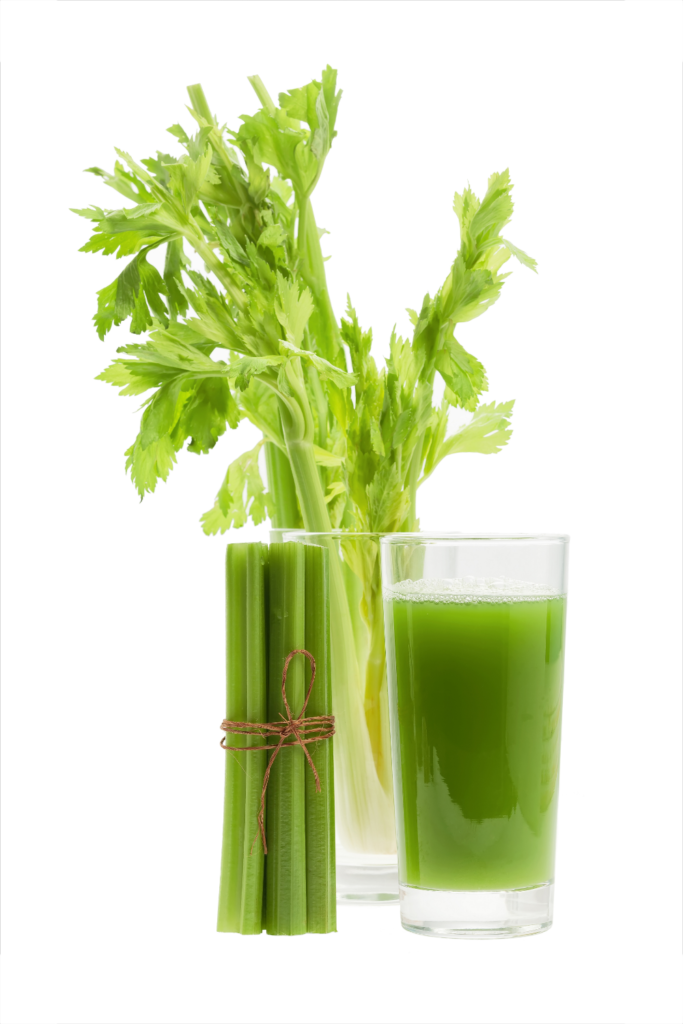
This vegetable has been shown to have a near calorie deficit! In other words, it takes almost as many calories to digest it as it provides your body.
When consuming two stalks of celery, which comes out to about 16 calories, you will ultimately only absorb about two of those sixteen original calories.
What happened to the other 14 calories? Celery is so dense in fiber that your body has to work harder to extract the nutrients. The other 14 calories were used to metabolize the original 16 calories from the celery.
Celery is also high in water content. So you may not be getting a lot of calories from this vegetable, but you are getting plenty of water.
The water fills up your belly making it stretch. In turn, your stretch receptors are then sending your brain the message that you have eaten enough food because your stomach has reached its capacity.
Some easy ways to include more celery into your diet is by using frozen chopped bags of celery in stir-fries and soups. Or you can cut up fresh stalks of celery to eat on salads or with hummus.
Dark leafy greens
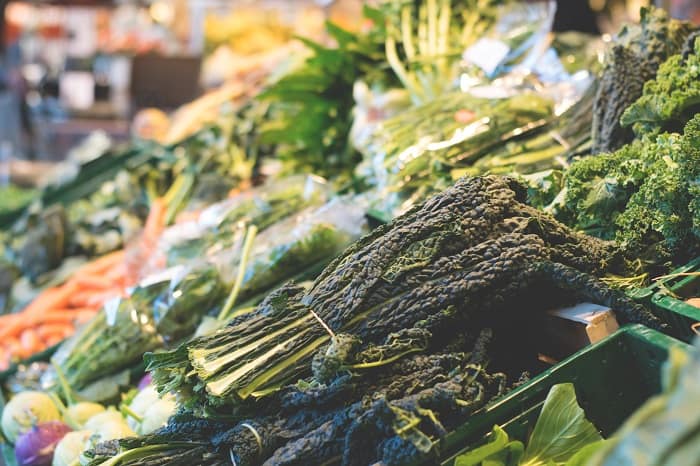
Kale, collard greens, spinach, Swiss chard, bok choy, turnip and beet greens are some examples of this highly nutritious category.
When our body receives signals from our cells that we are running low in certain nutrients our brain turns up our hunger drive in order to increase our calorie intake, and in turn, our nutrient intake.
When you consume dark green leafy vegetables regularly you can be sure you are getting the majority of your essential nutrients. Greens are actually the most nutrient dense food on the planet!
Not only are they nutrient powerhouses, but greens have been proven to reduce your risk of many chronic diseases, such as heart disease, diabetes, high blood pressure, obesity, and cancer.
These veggies can be consumed cooked or raw. They provide different benefits depending upon whether or not they are exposed to heat.
Dark leafy vegetables are usually consumed in salad, but they are also great in soups, smoothies, and stir-fries.
Try to get at least 3 servings per day. One serving is equivalent to 1 cup of raw greens, or a half cup of cooked greens.
Vinegar
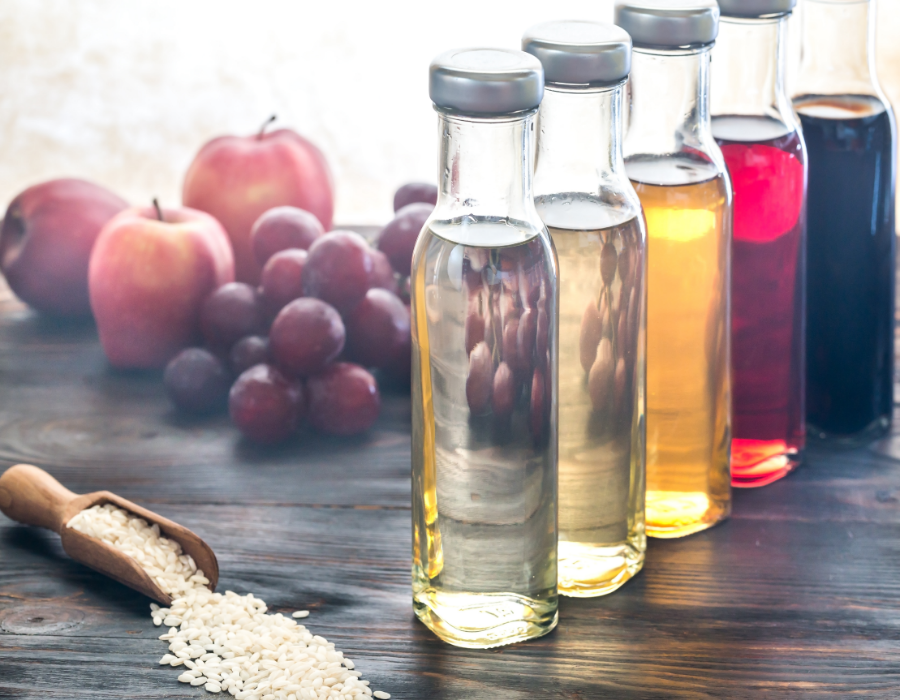
When tested against a vinegar-like placebo in randomized trials, vinegar has reliably proven its effectiveness in weight loss management.
Two tablespoons per day are considered safe and effective for gradual, sustainable weight loss. That would be the equivalent of how much vinegar you would use to dress your salad.
One of the mechanisms vinegar utilizes to support weight loss is by blunting the spikes in blood sugar that are naturally caused by consuming high glycemic foods like bread and potatoes. Studies reveal vinegar has a buffering effect that reduces and stabilizes these blood sugar variations.
It is important to maintain consistently stable blood sugar levels to keep your appetite suppressed and your metabolic rate on track.
Vinegar has also been proven to reduce belly fat, otherwise known as “visceral fat”. This is the stubborn fat around your midsection that has long been associated with chronic disease.
You can incorporate vinegar into your meals in a number of creative ways. I prefer it on salads, frozen banana-based ice cream, and stir-fries.
Today, you can find an array of specialty vinegars online or in certain grocery markets. Some of my favorite flavors are fig, blueberry, garlic & herb, habenero, and dark chocolate.
Apples
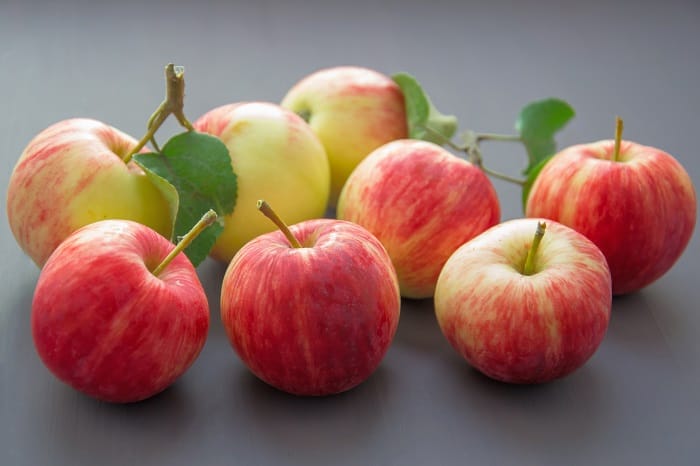
Fruit tends to have a bad rap with weight loss gurus because they are high in sugar content. It’s not what you eat that should concern you, however, it’s what you actually absorb.
Just because a given food contains a high amount of sugar, for instance, does not mean that all of that sugar is being utilized by the body.
In fact, when eaten whole, much of the sugar molecules are trapped within the fibrous walls of the apple. Some of the sugar is broken down and used by the body as glucose and glycogen, while the rest is excreted into the toilet bowl.
Apples also happen to have a high water content. One medium-sized apple is shown to have about an 86% water content. The water helps to fill up your stomach making you feel full.
Studies have also shown a negative calorie effect when apples are pre-loaded prior to meals. This means that when people consume an apple about 20 minutes prior to a meal, they end up consuming fewer calories overall.
The skin of an apple is particularly high in fiber, which we already know has a great impact on creating lean body mass.
So be sure never to peel your apples. Eating them whole will provide you with much greater health and weight loss benefits.
Broccoli
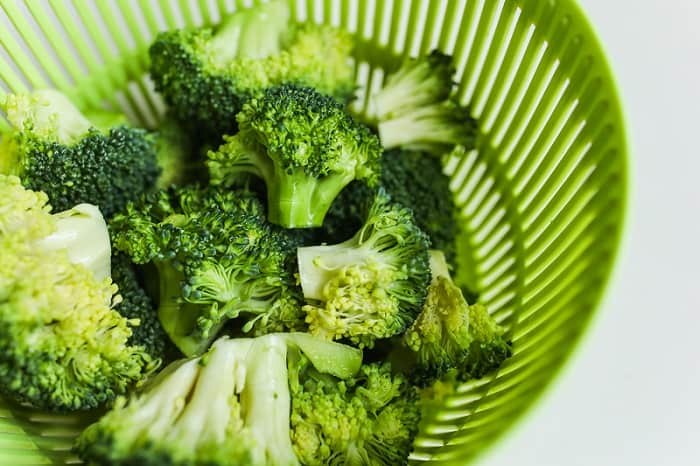
All cruciferous veggies have tremendous health benefits. These include kale, cauliflower, cabbage, bok choy, Brussels sprouts, and similar green leafy vegetables.
Broccoli has specifically been noted for its weight loss advantages. First of all, it has an incredibly low calorie density at just 30 calories per serving, which is one cup.
Cooked broccoli is naturally higher in calories at approximately 54 calories per cup. Whether eaten cooked or raw, you don’t have to worry about counting calories with this vegetable.
Broccoli is also helpful for weight loss due to its high nutrient content. It’s full of vitamin C, manganese, vitamin K folate, potassium, B vitamins, and vitamin A.
Although raw broccoli has fewer calories, cooked broccoli has about twice the nutrient density. So either way, you are getting major benefits from this vegetable.
The high degree of phtyochemicals found in cruciferous veggies are also thought to assist in weight management. Phytochemicals are found in all edible parts of a plant, especially the skin or peel.
Although we are just beginning to learn about the thousands of existing phytochemicals and the amazing benefits they provide on human health, researchers feel strongly that there is a fat-burning component involved in a number of these plant chemicals.
Broccoli is so easy to add to your meals. They go with soups, stews, stir-fries, salads, or just plain raw with hummus.
Most effective weight-loss strategies
Aside from incorporating more of the foods listed above into your daily or weekly dietary intake, there are some extremely valuable strategies below that will allow you to reach your weight loss goals with ease.
These are all evidence based approaches that prove effective for the majority of the population. I have used these methods to maintain my weight and lean body mass for the past five years.
For the fastest most dramatic results I suggest implementing each of this strategies as soon as you are ready. Otherwise you can incorporate them into your life gradually if you feel that is a better long term strategy for your lifestyle and personality.
However you choose to proceed, keep in mind that every one of these positive lifestyle changes will lead you to a healthier, happier you.
It may take some time and energy to get to where you want to be with your physical adjustments, but all these adjustments will become automatic if you do them long enough and consistently.
Focus on Fiber
As I am sure you have noticed, every weight loss food indicated above is packed with fiber. This is the number one ingredient found to support efforts to maintain a healthy body weight or to lose added pounds.
It’s not what you eat, it’s what you absorb. Fiber, which is indigestible by the body, can trap sugars and block fat and starch as it moves through your system.
Fiber also feeds your microbiome, which impacts your body in a number of ways. Such as, building serotonin to be utilized by your brain, supporting your immune system, and creating certain vitamins to be used by the body.
Your microbiome is greatly implicated in determining your body weight. These bacteria are involved in vital functions like metabolism, hunger, and digestion.
Some specific microbes have even been shown to promote weight gain. These bacteria originate from the consumption of animal foods and highly processed items like soda and fried foods.
Fiber has also been shown to promote weight loss by lowering blood pressure, and improving the body’s response to insulin.
It is important to maintain adequate amounts of insulin and blood sugar blood sugar because fluctuations can lead to over-active hunger signalling and increased fat storage.
Virtually all plants contain fiber while animal foods and highly refined items do not. By following a plant based diet, you will easily consume adequate amounts of daily fiber intake.
Just focus on getting plenty of WHOLE plant foods. Or at least minimally processed plant foods.
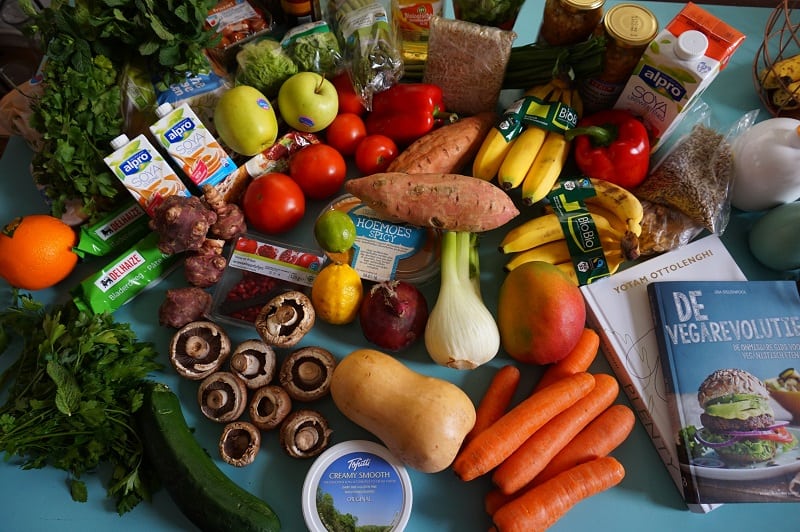
Front-load your calories
The vast majority of your calories should be consumed in the earlier half of each day. That means making breakfast and lunch the largest meals, and dinner fairly small.
This strategy has proven to be effective for a number of reasons.
- Most of your calories are used during the day when your body is most active
- This pattern of calorie consumption follows your natural circadian rhythms
- Most of your food should be digested by the time you fall asleep
Let’s dive into each of these a little further.
1. Most of your calories are used during the day when your body is most active
Studies show that if you eat the same exact meal later in the day as opposed to the beginning you actually take in more calories! Your morning oatmeal would be more calorically dense if you decided to eat it for dinner instead of breakfast.
How can this be? Ultimately, your body utilizes calories differently throughout the day.
In the morning and early afternoon your system is adjusted to be up and running at full capacity. And thus, a greater number of calories are required to fulfill your daytime metabolic needs.
As the day wanes into night, your body senses that it should begin slowing down and preparing for rest. And thus, fewer calories are needed and utilized during this stage of the day.
2. The front-loading pattern follows your natural circadian rhythms
Circadian rhythms are our body’s internal clock. Everything from our insulin sensitivity to our bowel movements and sleep patterns follow the natural rhythms of the sun.
Each internal mechanism and function is perfectly timed with the rising and setting of the sun. This finding has provided great insight as to why meals are metabolized differently at night than during the day time.
Studies reveal that night-shift workers tend to be more over weight and obese than day-shift workers. This holds true even when the amount and type of food consumed is identical.
The night-shift participants appeared to store more calories than those consuming the same calories during daylight hours. Researchers even controlled for individual differences by switching experiment groups.
So after a participant consumed the majority of their calories during the night for an entire week, they were switched to the daytime calorie adjustment for the subsequent week.
The results consistently showed that while a participant was consuming their calories during the night, they were storing more calories, burning less fat, and in turn, gaining more body weight.
But while on the daytime calorie adjustment, their bodies gradually shifted to a greater fat burn, less storage of calories, and overall, weight loss.
3. Most of your food should be digested by the time you fall asleep
Research shows that more calories are burned off in the morning due to diet-induced thermogenesis, the amount of energy the body takes to digest and process a meal.
It is important to get your calories in early on to ensure this effect can properly take place. Thermogenesis is disadvantaged by late night meals and snacking.
Your body stores more calories in the night while simultaneously burning less fat as noted above.
Sleep may also be negatively impacted by attempts to digest large amounts of food that have been consumed just prior to winding down for the night.
Studies show that people experience lower quality of sleep and shorter REM durations when food is consumed just prior to bedtime.
Poor sleep quality is closely linked to weight gain for several reasons. It has a tendency to cloud your judgement, making you more likely to choose unhealthy foods over more nutritious options.
People who do not get enough sleep at night also take in more calories than those who do get adequate sleep. This usually occurs later in the day when, instead of going to bed early, people tend to stay up snacking.
It is easy to confuse sleepiness with hunger in that vulnerable state of sleep deprivation.
Pre-load your meals
Calorie pre-loading is loosely defined as the consumption of relatively low-calorie food about 20-15 minutes prior to a meal in an effort to reduce overall calorie consumption.
One method of pre-loading is to drink up to two cups of cold water prior to each meal. You can also load up on high-water based foods like tomatoes, cucumbers, grapes, melon, and oranges.
The idea is that it takes approximately 20 minutes for your brain to receives signals from your stomach in response to digestion. These signals should elicit a response of decreased hunger due to the stretching of the stomach, for instance.
Therefore, when you load up on zero-calorie or very low-calorie foods just prior to a large meal you will ultimately ingest fewer calories even though you add the additional low-calorie item beforehand.
Studies show that when participants are given a healthy side-salad prior to a pasta meal, they consume fewer calories overall, as opposed to consuming the pasta without the salad.
So even though participants took in more calories prior to the meal that they otherwise would not have ingested, they wind up eating less calories.
The short video below illustrates the benefits of calorie pre-loading before meals in greater detail..
When pre-loading is used as a consistent method for eating fewer calories, body weight inevitably comes off.
Any foods that are high in fiber and water content, while also being low in calories should provide the desired outcome when utilizing the pre-loading method.
Eat before becoming ravenous
Many people believe that skipping meals is the only way to lose weight. This is simply not true.
If you are consuming the right foods, there is rarely a need to restrict calories or portion sizes.
In fact, research consistently shows that diets requiring people to cut back on calories to an extent where they are regularly experiencing hunger throughout the day tend to result in greater weight gain in the long run.
How is this possible? Well, first of all, we need to look at what kind of calories you are cutting back on. If you are reducing your carb intake, for instance, low-carbohydrate diets result in decreased lean body mass with a subsequent increase in body fat.
This is the opposite of what you are shooting for if you are trying to lose weight. We want to preserve our lean body mass, (water and protein) while reducing our overall body fat percentage.
For more information on the ineffectiveness of low-carb diets have a look at one of my earlier posts entitled Low-carb Vs Low-fat Diet: Which is Best for Sustainable Weight Loss?
Another factor we should take into account when considering why calorie restriction leads to weight gain in the long run is our body’s natural hunger drive.
To attempt to overcome your body’s need for more calories is not only a losing battle, but a counterproductive one as well.
You should eat when you are hungry. When people ignore hunger signals, they have a tendency to over-eat when they are finally given the opportunity to take in calories.
In addition to consuming more calories than you perhaps otherwise would have, you will also likely be ingesting lower quality calories.
When you allow yourself to become ravenous, you ultimately reach a state of hunger where you care less about the types of food entering your mouth, and more about reducing the discomfort experienced from such extreme hunger.
This usually leads to a binge eating cycle, where you rapidly consume an overabundance of calories in a single sitting.
The foods that people typically binge on are not carrots and broccoli. Instead, you will likely binge eat high-calorie foods such as chocolate, pizza, ice cream, cheeseburgers, and other highly processed junk food.
It is best to pre-plan and prepare your snacks and meals ahead of time so you don’t run into this cycle.
It is also best to practice to keep a clean home and office environment. Remove all junk food and anything that may trigger a binge from areas that you can control.
You know what your problem foods are. If you can’t control your eating habits with high calorie plant foods, such as nuts, seeds, avocados, and dried fruit, you should also limit these.
On a whole foods plant-based diet you need not concern yourself with calorie counting or portion control because these foods are consistent with your natural biological design, and will therefore stabilize your weight effortlessly.
Karli Jackson

